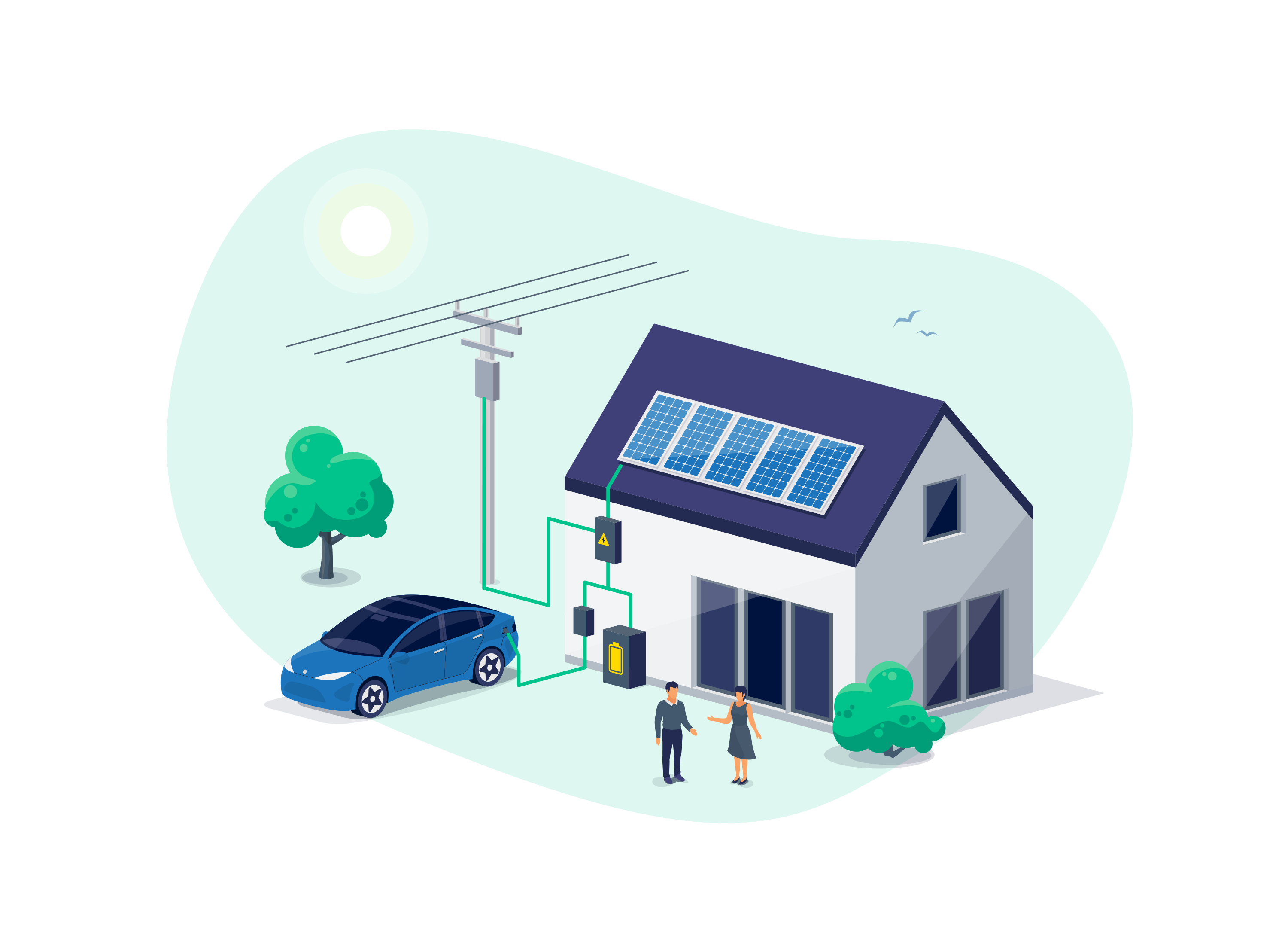You may already know that electric vehicles (EVs) are better for the environment and can be cheaper to run at home than petrol or diesel cars. But there’s even more to look forward to.
Soon, your EV might also help lower your home energy bills.
This is thanks to new technology called Vehicle-to-Everything (V2X), which includes:
- Vehicle-to-Grid (V2G): Sending energy from your car back to the national electricity grid
- Vehicle-to-Home (V2H): Powering your home using your car battery
- Vehicle-to-Load (V2L): Using your EV to power things like a kettle or camping gear
In this article, we’ll cover how V2G works, how you can access it, and how it can help.
How does V2G work?
Think of your EV as a giant battery on wheels. Most people charge their EVs at home, usually overnight when electricity is cheaper. With V2G, your car battery could send that stored energy back to the grid or help power your home.
This way, you avoid paying when electricity is more expensive, such as busy times when people get home from work and switch on the oven, TV, or kettle.
This means:
- You charge your EV when energy is cheap
- You use your EV power for your home or appliances and can sell it when prices are higher
This will help you save money on electricity and charging and give you more control and flexibility over your energy use. You’ll also support a greener energy system by reducing demand at peak times.
And if you have solar panels or a heat pump, they can work with your EV too, making your home even more energy efficient and giving you more energy bill savings.
Did you know?
When you lease an EV on the Motability Scheme, you’ll get home chargepoint and standard installation or a subscription to the bp pulse network of public chargepoints included in your all-inclusive lease package.
What do I need for V2G?
V2G-capable vehicles and chargers are expected to be widely available soon, although rollout could be delayed due to regulations or technical barriers.
To make the most of V2G in the future, you’ll need:
- A compatible EV and charger that can regularly be plugged in at home
- A smart meter
- Internet or Wi-Fi
- An energy tariff that supports V2G
- An app to set your charging preferences and schedule
You’ll just need to plug in at home and the smart tech will handle the rest. If you’re not sure you’ve got everything you need, your energy supplier or installer can help check if your EV, charger and tariff are V2G-ready.
While full V2G is not widely available yet, customers can benefit from smart charging, which means you can charge when electricity is cheapest.
What’s coming next?
V2G technology is moving fast and we’re keeping a close watch to see how it could support our customers.
In the future, it could be an easy way for you to save more, support a cleaner energy system, and get even more value from your EV.
Learn more about EVs
Thinking about going electric? Want to know more about some of the modern features in EVs? We’ve got you covered.
Our EV email series is for anyone who’s looking to learn more about EVs. We’ll cover things like range, charging and accessibility.
Sign up now to learn about electric vehicles.
Related articles
Electric car charger basics: EV connector types and charging cables
![]()









